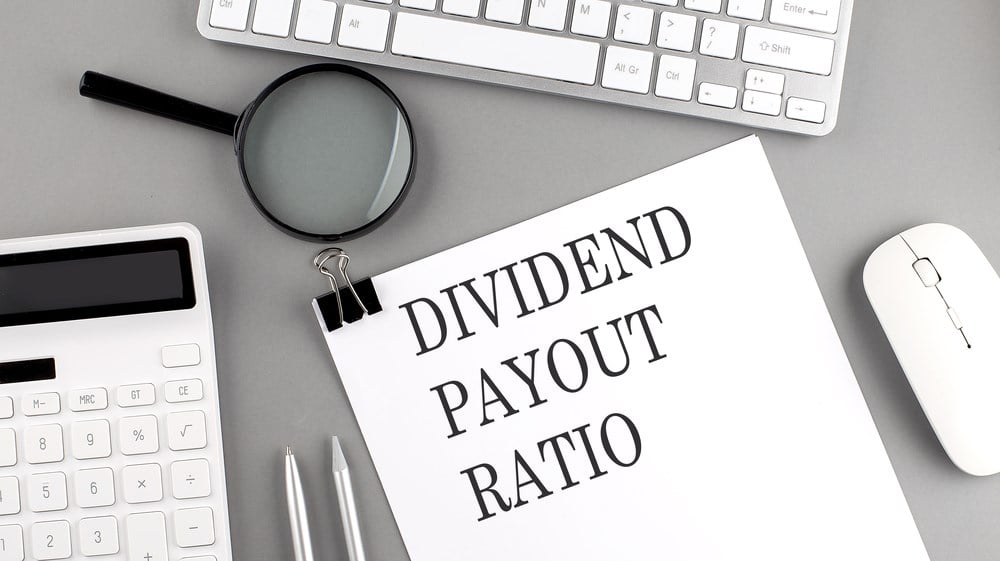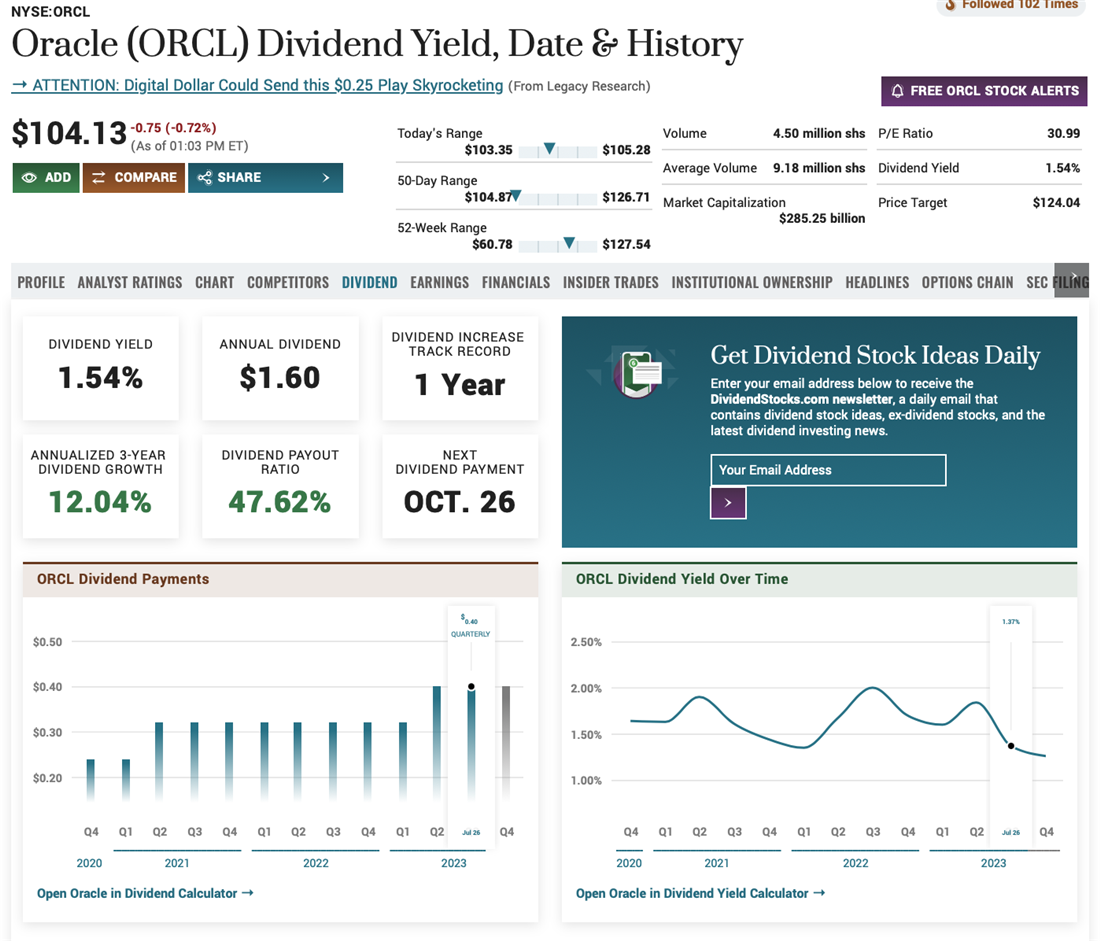What is a Dividend Payout Ratio, and What Does it Indicate? Dividend payout ratios are important metrics, and indicate how much of a company's earnings shareholders get. Learn more about dividend payout ratios.

This story originally appeared on MarketBeat

Dividend payout ratios can be one of the most important metrics when deciding whether to invest in a company.
It indicates how much of a company's earnings it pays shareholders dividends. By understanding dividend payout ratios, you can gain valuable insight into a company's financial health, profitability and sustainability and whether it's worth your time and money.
In this article, we'll explore dividend payout ratios, how to calculate them and what they indicate.
What is a Dividend Payout Ratio?
A dividend payout ratio is a financial metric used to measure the proportion of a company's earnings paid to shareholders as dividends.
You can calculate the ratio by dividing the total dividend payments a company makes over a certain period by its total earnings for that same period.
The resulting figure is expressed as a percentage or a ratio. For example, if a company has total earnings of $100,000 over three months and pays out $50,000 in dividends during the same period, its dividend payout ratio would be 50%.
How to Calculate a Dividend Payout Ratio
The dividend payout ratio is a straightforward metric to calculate. All you need to do is divide the total dividend payments made by the company during a certain period by its total earnings for the same period. The resulting percentage or ratio is the company's dividend payout ratio.
The formula to calculate a dividend payout ratio is:
Dividend Payout Ratio = (Dividend Payments / Total Earnings) x 100
Most companies will provide their dividend payout ratio on their investor relations page, usually expressed as either a percentage or a ratio. You can find it in the company's financial statements or annual report, which you'll find linked to on MarketBeat under the "Financials" tab on any stock page.
This information is typically updated quarterly and may show in documents such as a 10-Q filing. You can also view this information on MarketBeat by navigating to a stock page and clicking on "Dividends," (below, using Oracle Corporation (NYSE: ORCL) as an example.)
 Once you find the dividend payout ratio, you can use it to determine whether the company is paying out too much or too little in dividends. A high dividend payout ratio could indicate that a company is financially stable and profitable, with excess cash flow that it can afford to pay out as dividends. On the other hand, a low dividend payout ratio may mean that a company is reinvesting its earnings into the business for growth and expansion.
Once you find the dividend payout ratio, you can use it to determine whether the company is paying out too much or too little in dividends. A high dividend payout ratio could indicate that a company is financially stable and profitable, with excess cash flow that it can afford to pay out as dividends. On the other hand, a low dividend payout ratio may mean that a company is reinvesting its earnings into the business for growth and expansion.
What to Consider When Evaluating Dividend Payout Ratios
Consider a company's dividend history and growth rate when considering its dividend payout ratio, and using a dividend calculator can help. Companies with a consistent track record of paying and increasing dividends over time are generally more attractive than those with an inconsistent or decreasing dividend payout ratio.
Industry and market factors may also affect a company's dividend payout ratio. For example, some industries may have greater regulatory risks, higher capital requirements or be more prone to economic fluctuations, which could impact companies' ability to pay dividends consistently.
Also, closely examine the company's management team and track record in managing the business and making strategic decisions. A strong team with a clear vision for the company's future can indicate its ability to sustain and grow dividends over time.
Most importantly, look at a company's overall financial health and performance, including revenue growth, earnings growth, debt levels and profitability. These factors can all affect a company's ability to pay dividends over the long term.
Case Study: Oracle Corporation
A good example of a company with a good dividend payout ratio is Oracle, which has consistently maintained a dividend payout ratio of 35% to 50%, demonstrating its commitment to paying out dividends to shareholders.
The company also boasts strong financials, pointing to an ability to generate enough profits to fund its current and future dividends.
Furthermore, the company has shown an increasing trend in dividend payments over time, which means it's likely committed to rewarding shareholders with consistent returns. All these factors could make Oracle an attractive option if you're looking for companies with solid dividend yields and sustainable payouts.
What Does a Dividend Payout Ratio Indicate?
The dividend payout ratio can be a valuable indicator of a company's financial health, profitability and sustainability. A higher ratio indicates that the company pays dividends more of its earnings to shareholders. A lower ratio indicates that a company is retaining a greater percentage of its earnings.
High Payout Ratios
A high dividend payout ratio indicates that a company pays out a significant portion of its earnings to shareholders as dividends. This can signify stability and indicates that the business is generating strong cash flow. High dividend payout ratios also indicate that the company has a healthy dividend policy, given that it can afford to pay out such a high proportion of its earnings as dividends.
However, a high dividend payout ratio can also point to trouble. If a company has a high dividend payout ratio and isn't generating enough profits to cover its dividend payments, that could be a sign that it's struggling to remain profitable
Low Payout Ratios
A low dividend payout ratio means the company is retaining more of its earnings and reinvesting them into the business. It's a possible sign of growth, and the company investing in its future. Low dividend payout ratios can also indicate that the company is not yet mature enough to pay out high dividends or has other financial obligations to prioritize.
However, a low dividend payout ratio can also be a sign of trouble. If a company has a low dividend payout ratio and isn't reinvesting its earnings back into the business, it could be a sign that it's struggling to remain profitable and isn't investing in its future.
Average Payout Ratios
A good dividend payout ratio (such as those in MarketBeat's list of top-rated dividend stocks) is generally between 30% and 60%. Companies with a dividend payout ratio in this range are more likely to be financially healthy and sustainable. They're paying out a reasonable amount of their earnings as dividends while reinvesting some of them into the business.
Looking for a Good Payout? Consider the Dividend Payout Ratio
The dividend payout ratio is a key financial metric you need to know, because it can provide valuable insight into a company's financial health, profitability and sustainability. A higher ratio means the company pays out a greater percentage of its earnings to shareholders as dividends. Look for a dividend payout ratio between 30% and 60%, a good indicator of financial health.











